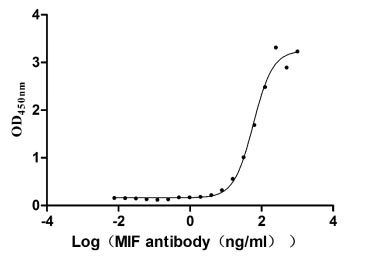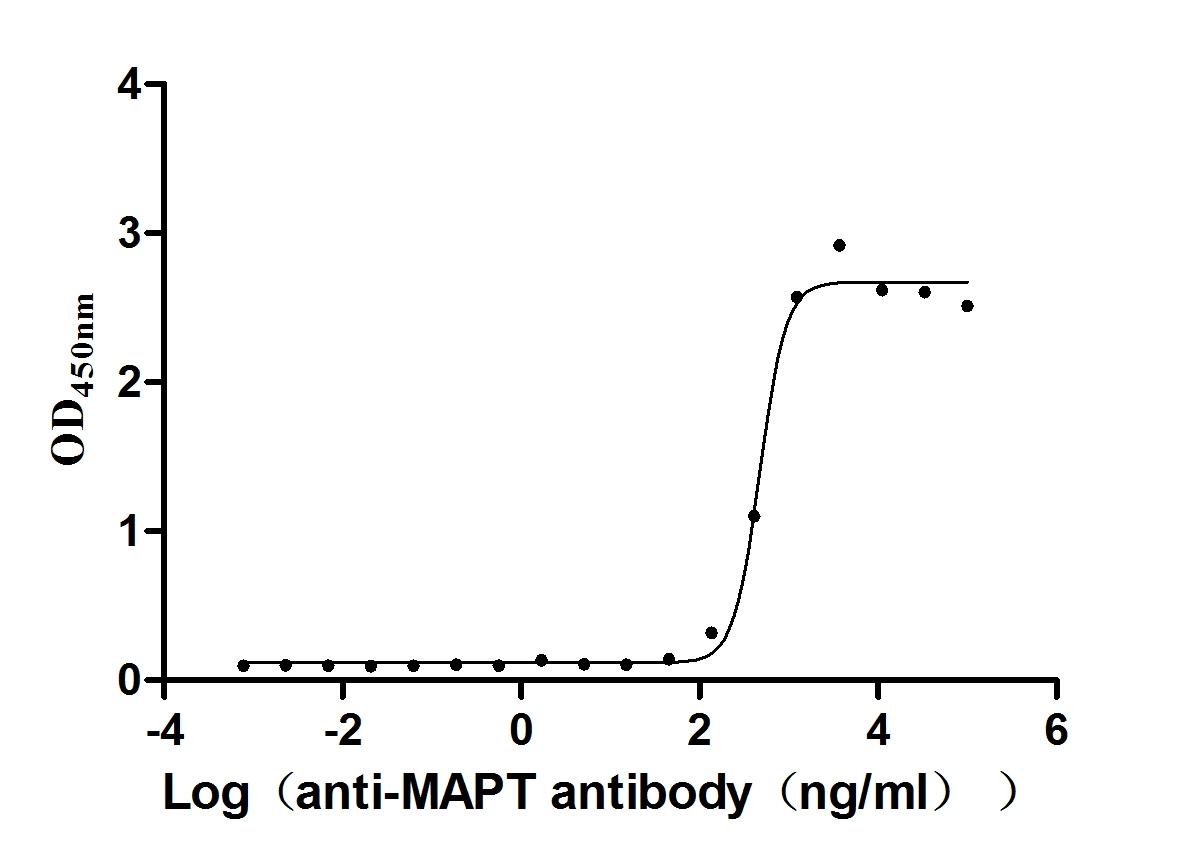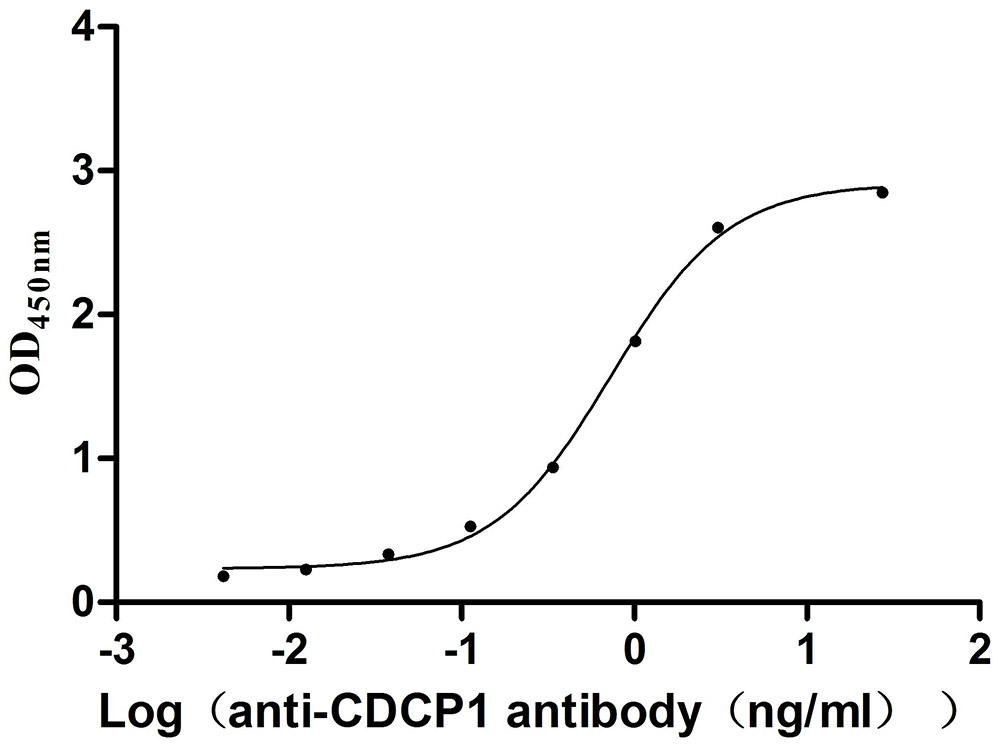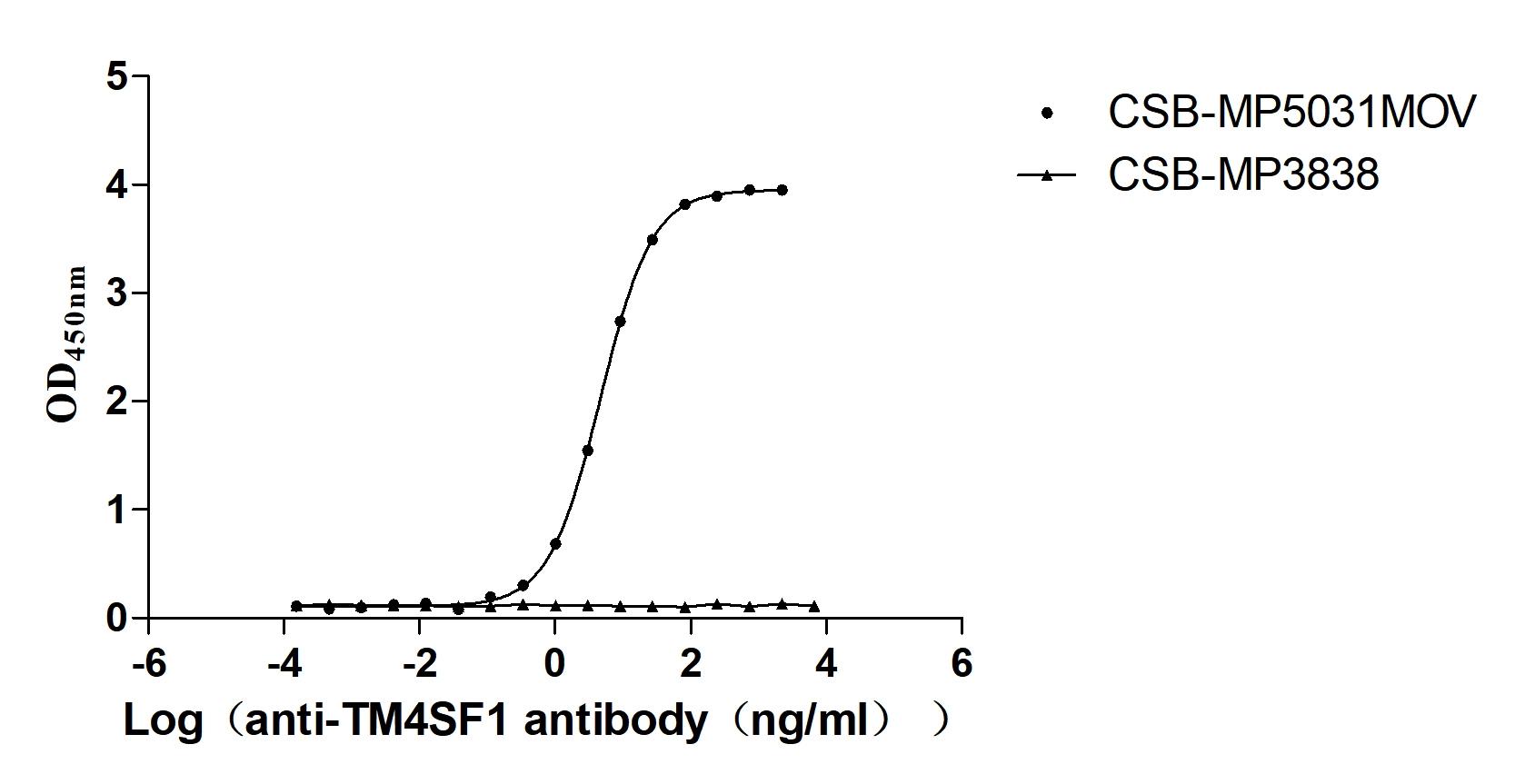Recombinant Human Lysophosphatidic acid receptor 2 (LPAR2), partial
-
货号:CSB-YP013048HU1
-
规格:
-
来源:Yeast
-
其他:
-
货号:CSB-EP013048HU1
-
规格:
-
来源:E.coli
-
其他:
-
货号:CSB-EP013048HU1-B
-
规格:
-
来源:E.coli
-
共轭:Avi-tag Biotinylated
E. coli biotin ligase (BirA) is highly specific in covalently attaching biotin to the 15 amino acid AviTag peptide. This recombinant protein was biotinylated in vivo by AviTag-BirA technology, which method is BriA catalyzes amide linkage between the biotin and the specific lysine of the AviTag.
-
其他:
-
货号:CSB-BP013048HU1
-
规格:
-
来源:Baculovirus
-
其他:
-
货号:CSB-MP013048HU1
-
规格:
-
来源:Mammalian cell
-
其他:
产品详情
-
纯度:>85% (SDS-PAGE)
-
基因名:
-
Uniprot No.:
-
别名:LPAR2; EDG4; LPA2; Lysophosphatidic acid receptor 2; LPA receptor 2; LPA-2; Lysophosphatidic acid receptor Edg-4
-
种属:Homo sapiens (Human)
-
蛋白长度:Partial
-
蛋白标签:Tag type will be determined during the manufacturing process.
The tag type will be determined during production process. If you have specified tag type, please tell us and we will develop the specified tag preferentially. -
产品提供形式:Lyophilized powder
Note: We will preferentially ship the format that we have in stock, however, if you have any special requirement for the format, please remark your requirement when placing the order, we will prepare according to your demand. -
复溶:We recommend that this vial be briefly centrifuged prior to opening to bring the contents to the bottom. Please reconstitute protein in deionized sterile water to a concentration of 0.1-1.0 mg/mL.We recommend to add 5-50% of glycerol (final concentration) and aliquot for long-term storage at -20℃/-80℃. Our default final concentration of glycerol is 50%. Customers could use it as reference.
-
储存条件:Store at -20°C/-80°C upon receipt, aliquoting is necessary for mutiple use. Avoid repeated freeze-thaw cycles.
-
保质期:The shelf life is related to many factors, storage state, buffer ingredients, storage temperature and the stability of the protein itself.
Generally, the shelf life of liquid form is 6 months at -20°C/-80°C. The shelf life of lyophilized form is 12 months at -20°C/-80°C. -
货期:Delivery time may differ from different purchasing way or location, please kindly consult your local distributors for specific delivery time.Note: All of our proteins are default shipped with normal blue ice packs, if you request to ship with dry ice, please communicate with us in advance and extra fees will be charged.
-
注意事项:Repeated freezing and thawing is not recommended. Store working aliquots at 4°C for up to one week.
-
Datasheet :Please contact us to get it.
相关产品
靶点详情
-
功能:Receptor for lysophosphatidic acid (LPA), a mediator of diverse cellular activities. Seems to be coupled to the G(i)/G(o), G(12)/G(13), and G(q) families of heteromeric G proteins. Plays a key role in phospholipase C-beta (PLC-beta) signaling pathway. Stimulates phospholipase C (PLC) activity in a manner that is independent of RALA activation.
-
基因功能参考文献:
- The results indicate that LPA2 and LPA3 receptors play opposing roles during red blood cells differentiation. PMID: 27244685
- These results suggest that LPA signaling via LPA2 may play an important role in the regulation of cellular functions in HT1080 cells treated with cisplatin. PMID: 28205098
- LPA2 mRNA levels were associated with poorer differentiation, and higher LPA6 levels were associated with microvascular invasion in HCC; both became a risk factor for recurrence after surgical treatment when combined with increased serum ATX levels PMID: 27583415
- epithelial dysplasia was observed in founder mouse intestine, correlating LPA2 overexpression with epithelial dysplasia. The current study demonstrates that overexpression of LPA2 alone can lead to intestinal dysplasia. PMID: 27124742
- LPA2 expression was associated with HIF-1alpha expression and that a high level of LPA2 was associated with shorter overall survival and was an independent prognostic predictor for breast cancer in Chinese women. PMID: 27805252
- LPAR2 mRNA is up-regulation in colorectal cancer. PMID: 26937138
- Data show high expression levels of LPAR2 and LPAR1 in endometrial cancer tissue with positive correlations with FIGO stage suggesting them as potential biomarkers for endometrial cancer progression. PMID: 26327335
- Suggest that LPA2 and LPA3 may function as a molecular switch and play opposing roles during megakaryopoiesis of K562 cells. PMID: 25463482
- the RhoA-regulated formin Dia1 is involved in entosis downstream of LPAR2 PMID: 24950964
- Crystal structure of NHERF2 PDZ1 domain complex with C-terminal LPA2 sequence. The PDZ1-LPA2 binding specificity is achieved by hydrogen bonds and hydrophobic contacts with the last four LPA2 residues contributing to specific interactions. PMID: 24613836
- LPA1 and LPA2 are major LPA receptor subtypes compared with low-expressed LPA3 in PANC-1 tumor cells. PMID: 24061591
- Lysophosphatidic acid (LPA) increased hepatocellular carcinoma cells cell invasion, which was LPA-receptor dependent. PMID: 23569130
- LPA2 and LPA6 receptor subtypes are predominant in both HPAECs and HMVECs PMID: 23084965
- found that LPA receptor 2/3-mediated IL-8 expression occurs through Gi/PI3K/AKT, Gi/PKC and IkappaB/NF-kappaB signaling PMID: 21964883
- This work shows for the first time that key components of the LPA pathway are modulated following traumatic brain injuries in humans. PMID: 21234797
- MAGI-3 competes with NHERF-2 to negatively regulate LPA2 receptor signaling in colon cancer cells. PMID: 21134377
- LPA2 gene mutation may play some role in the pathogenesis of colon cancer. PMID: 20890765
- show that human microglia express LPA receptor subtypes LPA(1), LPA(2), and LPA(3) on mRNA and protein level. LPA activation of C13NJ cells induced Rho and extracellular signal-regulated kinase activation and enhanced cellular ATP production. PMID: 19899077
- demonstrate that two biological fluids, blood plasma and seminal plasma, differentially activate LPA receptors PMID: 12123830
- results suggested that LPA(2) and LPA(3) may be involved in VEGF expression mediated by LPA signals in human ovarian oncogenesis PMID: 12668280
- LPA may directly increase the level of cyclin D1 in ovarian cancer cells, increasing their proliferation. PMID: 12759391
- Upregulation of LPA2 may play a role in carcinogenesis, particularly in postmenopausal breast cancer. PMID: 15535846
- LPA2 is the major LPA receptor in colon cancer cells and cellular signals by LPA2 are largely mediated through its ability to interact with NHERF2. PMID: 15728708
- formation of the LPA receptor/PDZ domain-containing RhoGEF complex plays a pivotal role in LPA-induced RhoA activation PMID: 15755723
- These results demonstrate that MAGI-3 interacts directly with LPA(2) and regulates the ability of LPA(2) to activate Erk and RhoA. PMID: 16904289
- EDG4 and EDG2 cooperate to promote LPA-stimulated chemotaxis in breast tumor cell lines. PMID: 17496233
- data suggest that LPA receptor-dependent expression of CTGF and CYR61 represents a common host response after interaction with bacteria. PMID: 17765657
- lysophosphatidic acid 2 receptor mediates down-regulation of Siva-1 to promote cell survival PMID: 17965021
- A role for the transgenic lysophosphatidic acid (LPA)2 receptor is identified in regulating smooth muscle cell migratory responses in the context of vascular injury. PMID: 18703779
- LPA and LPA receptors, LPA(2) as well as LPA(1), represent potential therapeutic targets for patients with MPM PMID: 18754873
- Expression of LPA2 during ovarian carcinogenesis contributes to ovarian cancer aggressiveness, suggesting that the targeting of LPA production and action may have potential for the treatment of ovarian cancer. PMID: 19001604
- Switching of LPA receptor expression from LPA3 to LPA1, may be involved in prostate cancer progression and/or androgen independence PMID: 19025891
- LPA(1) receptor, LPA(2) and LPA(3) receptors-induced VASP phosphorylation is a critical mediator of tumor cell migration initiation PMID: 19081821
- LPA2 and Gi/Src pathways are significant for LPA-induced COX-2 expression and cell migration that could be a promising drug target for ovarian cancer cell metastasis. PMID: 19116446
显示更多
收起更多
-
亚细胞定位:Cell surface. Cell membrane; Multi-pass membrane protein. Note=Prior to LPA treatment found predominantly at the cell surface but in the presence of LPA colocalizes with RALA in the endocytic vesicles.
-
蛋白家族:G-protein coupled receptor 1 family
-
组织特异性:Expressed most abundantly in testes and peripheral blood leukocytes with less expression in pancreas, spleen, thymus and prostate. Little or no expression in heart, brain, placenta, lung, liver, skeletal muscle, kidney, ovary, small intestine, or colon.
-
数据库链接:
HGNC: 3168
OMIM: 605110
KEGG: hsa:9170
STRING: 9606.ENSP00000384665
UniGene: Hs.122575
Most popular with customers
-
Recombinant Human Macrophage migration inhibitory factor (MIF) (Active)
Express system: Mammalian cell
Species: Homo sapiens (Human)
-
Recombinant Mouse Microtubule-associated protein tau (Mapt) (Active)
Express system: Mammalian cell
Species: Mus musculus (Mouse)
-
Recombinant Human Claudin-6 (CLDN6)-VLPs, Fluorescent (Active)
Express system: Mammalian cell
Species: Homo sapiens (Human)
-
Recombinant Human Carcinoembryonic antigen-related cell adhesion molecule 6 (CEACAM6) (Active)
Express system: Mammalian cell
Species: Homo sapiens (Human)
-
Recombinant Mouse CUB domain-containing protein 1 (Cdcp1), partial (Active)
Express system: Mammalian cell
Species: Mus musculus (Mouse)
-
Recombinant Human Interleukin-2 (IL2) (Active)
Express system: Mammalian cell
Species: Homo sapiens (Human)
-
Recombinant Macaca fascicularis Transmembrane 4 L6 family member 1 (TM4SF1)-VLPs (Active)
Express system: Mammalian cell
Species: Macaca fascicularis (Crab-eating macaque) (Cynomolgus monkey)
-
Recombinant Human Tumor necrosis factor ligand superfamily member 15(TNFSF15) (Active)
Express system: Mammalian cell
Species: Homo sapiens (Human)




f4-AC1.jpg)




-AC1.jpg)










